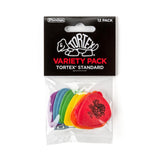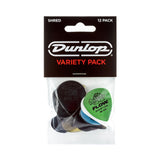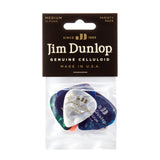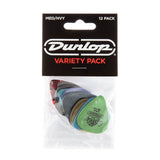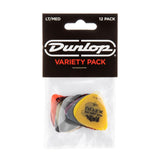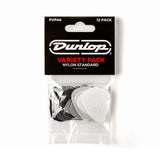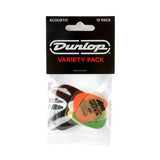Whether you like it or loathe it, relicing is here to stay. An idea that originally gained traction as a way to match new parts to vintage guitars, relic guitars have taken on a life of their own, with guitar builders and major manufacturers all opting to provide relic’d finishes for guitarists hungry for vintage aesthetic.
Vintage GuitarsWe all love vintage guitars here, they tell you their story at a glance, wearing the scars of a life of rigour openly. It’s those stories that make these guitars special, whether it’s that ding from dropping it during a studio session, the buckle rash on the back from a particularly tough tour, or the wear on the finish from decades of your elbow resting in the same position. We all love to tell and be told tales and for most guitarists their guitars have accompanied them throughout their lives, firmly interwoven into the fabric of their existence.
It’s no wonder then that relic guitars have soared in popularity. They allow you to dispel any worries with buying vintage instruments, whether that’s legitimate origins, or just the fact that it will even fire up when you first plug it in. Old guitars are great for their aura and aesthetic, but lets face it, most vintage loving guitarists will admit that modern hardware and electronics are far superior, particularly in terms of reliability. There are different levels of reclicing, too some people want a heavy relic where the finish is practically destroyed, whereas for others, they just want something that looks like it's been used, rather than abused.
The Early RelicsIn 1995 Fender showed off some strange guitars at the annual NAMM gear show, not realising the can of worms they were about to open. So good were the relic jobs the Fender Custom Shop had performed on these guitars, people thought they were legitimate originals of the Nocaster and the ‘Mary Kaye’ Stratocaster. Demand for these Custom Shop aged beauties skyrocketed over the next 20 years, finding their way into the Mexico factory with the Fender Road Worn line and Fender relic guitars continue to be extremely popular to this day.
It wasn’t just Fender either, Gibson got in on the aged guitar game with their own Custom Shop Les Paul ’59 Reissue, which featured realistically tarnished pickup covers and Nitrocellulose lacquer that was checked and dulled through various techniques. The relicing of Gibson Custom Shop guitars wasn’t quite like that from their Corona, California based counterparts however, Gibson wanted a ‘broken-in’ feel, rather than the look of an aged guitar.
How to Relic your guitarSo you want to know how to relic your guitar? Well you’re in the right place, but before we proceed, a word of caution. Relicing your guitar can cause damage to your instrument because it is not an exact science. It requires a lot of thought and planning to do well and for a lot of this work, once you’ve started there’s no going back! So make sure you’re at ease with the idea of irreversibly damaging your instrument before you commence work of this kind.
Relicing Prep Work
Before your start to do anything you will need to take your guitar completely to pieces, so make sure you organise your parts properly and don’t leave them scattered all over the shop. Trust us, if you’re doing it for the first time you’ll either lose something, or forget where something goes. Get some references of other guitars together to help you identify the areas you'll want to work on. Finding a guitar that has actually been through 30 years of abuse will help you produce a much more realistic look, which you can then sculpt to your personal preference.
Relicing ToolsGathering your tools before you commence work prevents delays in the process, and relicing can take a lot of time so save yourself the headache and make sure you have the basics! You will need different grits of sandpaper, luthier tools to take the guitar apart, nitrocellulose lacquer, and blunt objects for creating dents and scratches.
Check out all our Luthier Tools here.
A Note on Guitar Lacquer
It’s important to note that your finish plays a big part in relicing. If you have a polyurethane finish, it will pretty much stay shiny no matter what you do to it. A poly finish will not wear down the same way nitrocellulose does, so we'd advise steering clear of relicing polyurethane finishes. Nitrocellulose finishes are a hallmark of vintage guitars, less durable and less shiny, as well as being prone to ‘checking’, the process by which Nitrocellulose lacquer breaks down and small spiderweb cracks form in the finish.
If you’re unsure what kind of finish your guitar has and Google is turning up a blank, then giving it a rub with some sandpaper on an inconspicuous area should give you an answer. Polyurethane will resist your attempts to use sandpaper, whereas a nitro finish should wear away with just a bit of elbow grease.
Finish WearNow that you’ve taken everything apart and you’re ready to rock, let’s get to the good stuff! Your first step should be to plan and establish which areas you’d like to sand down. Use the personal touch, think about how you hold the guitar, and where it would wear if you were to play it for 20 years! Using the actual objects to imitate the wear, like your own belt buckle for the buckle rash on the back, will go a long way to making the guitar look realistically worn. Think about where your elbow rests while you play and the kind of abuse you put your guitar through to help you make decisions on where to relic the guitar body.
Guitar SandingUsing different grit levels of sandpaper is key to this process, so start with rough at this stage, somewhere in the 800-2000 range should work well. You’ll want to wet sand the body down in your marked locations, using your different grits to blend the rough spots into the untarnished finish. You want a smooth transition from the exposed wood to untouched finish for the most realistic look.
Using higher grit sandpaper will allow you to eliminate any sanding lines and make for a smoother overall finish, so use something in the 3000-5000 grit range for this kind of work. It’s a time consuming process, but take it slow and steady because once it’s done there’s no going back!
Chips, Dents, and ScratchesNow that we’ve done the wear and tear from playing, it’s time to put in some damage from life on the road. Unless you keep your guitar on the wall permanently and never play it, it’s going to get dinged from time to time, so these small marks can go a long way to making your relic job look much more realistic. You can also really overdo this part, so always remember to take stock of what it is you want. Everyone drops their guitar from time to time, but we don’t tend to drop it five times a day so be wary of going overboard.
You can use a wide variety of options here, think screwdrivers, hammers, input jacks, belt buckles, whatever you like really! Again think about what your guitar goes through in its daily life to make a realistic relic job of it. If you’ve removed everything from the body you could even try actually dropping it, but be wary of causing serious damage! Being mindful of how you might drop your guitar and where the damage would be done will go a long way to making for a great aged look.
Checking and Dulling the FinishNitro finishes will check and dull over time, it’s another part of what makes them so sought after by vintage guitar lovers. However, checking a finish artificially is easier said than done, and you can’t get the dulling effect by sanding alone. Dulling occurs over time when the guitar is exposed to the elements, and the finish fades slightly. To dull your guitar’s finish, you will need to leave it exposed to direct sunlight, and the time for this process will vary from guitar to guitar. Be prepared to do this for a few days before getting the dulled finish you desire.
Checking occurs on a guitar due to the instrument being exposed to temperature changes over time. Thankfully there’s a relatively simple way to speed up this process and get your guitar looking like it’s been here there and everywhere. If you have the time, then you can freeze your guitar body overnight then leave it out to thaw for a realistic checked look. You may need to do this several times before you start to see checking on your guitar body.
If you need to do it quicker, then the combination of a heat gun (on its lowest setting) and some cool, compressed air cans may get you results quicker, but is more likely to damage your guitar, so work in small steps.
Relic Hardware & Pickups
Now that you’ve got your guitar body looking nice and aged, putting your shiny chrome hardware back on will stick out like a sore thumb. Thankfully relicing guitar hardware is a lot easier than the guitar body, and if you’re short on time, you can always purchase some pre-aged hardware here.
If you do want to do it yourself then there are several techniques you can use.
FilingUsing a file or steel wool is a great way to dull the shine on new hardware and add some wear and tear is a nice simple way to give an aged look. Alternatively leaving your hardware exposed to the elements can create realistic rust. Just don’t leave them out too long!
Relic SolutionsSolutions of bleach and water can age hardware, something in the region of three parts water to one part bleach should do the trick. You can also use vinegar to tarnish your metal pickup covers and hardware. Simply pop your hardware into a container without a lid, place it into a larger container with a lid, then pour some vinegar into the larger box and close the lid and let everything sit for a few hours. Whatever you do don’t put the vinegar directly onto the hardware!
Relic Guitar NeckA played in neck tends to feel better to most guitarists than something brand new as you wear the gloss away over time. Relicing a neck requires some practice however, or you run the rest of messing it up. If you can, practicing on a cheaper guitar neck will go a long way to ensure you get it right on your main guitar neck. You can sand down the back of the neck for a smoother feel, as well as maple fretboards to create that worn in look.
On the back of the neck you’ll want to use a combination of sandpaper, buffing and polishing again taking it in small steps to ensure the best final result. With the fretboard a higher grit sandpaper should do the trick, just think about where you find yourself most often on the fretboard, are you often reaching to the higher registers for those accentuating Blues licks? Or are you more likely to be at the lower end of the scale, riffing and playing chords? Whatever kind of player you are, making the relic job personal to your playing style will help your guitar share the story you want it to.
ConclusionThere are no hard and fast rules to live by when it comes to relicing guitars, it’s more about what kind of tale you want it to tell. It’s a great way to make your instrument unique to you, however you should always be careful when doing it, as going wrong can turn your fairytale guitar into a horror story!
Check out all of our gear for guitar relicing here.
Learn MoreGet the lowdown on our brand new Guitar Necks.
Read all about guitar tuners with our Kluson Tuner Guide.
Understand more about the way your guitar works with our Capacitor & Tone Pots Guide.





















